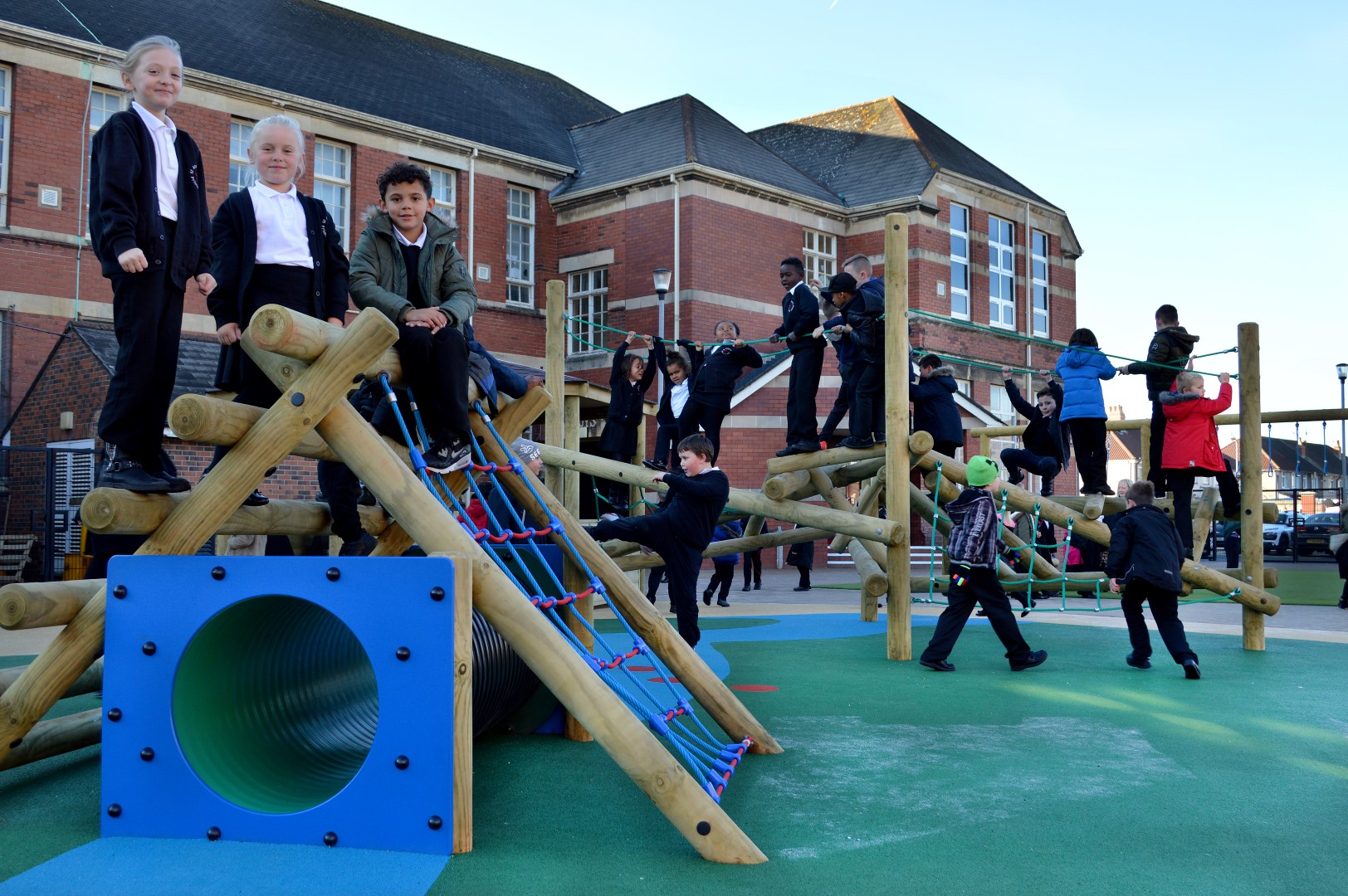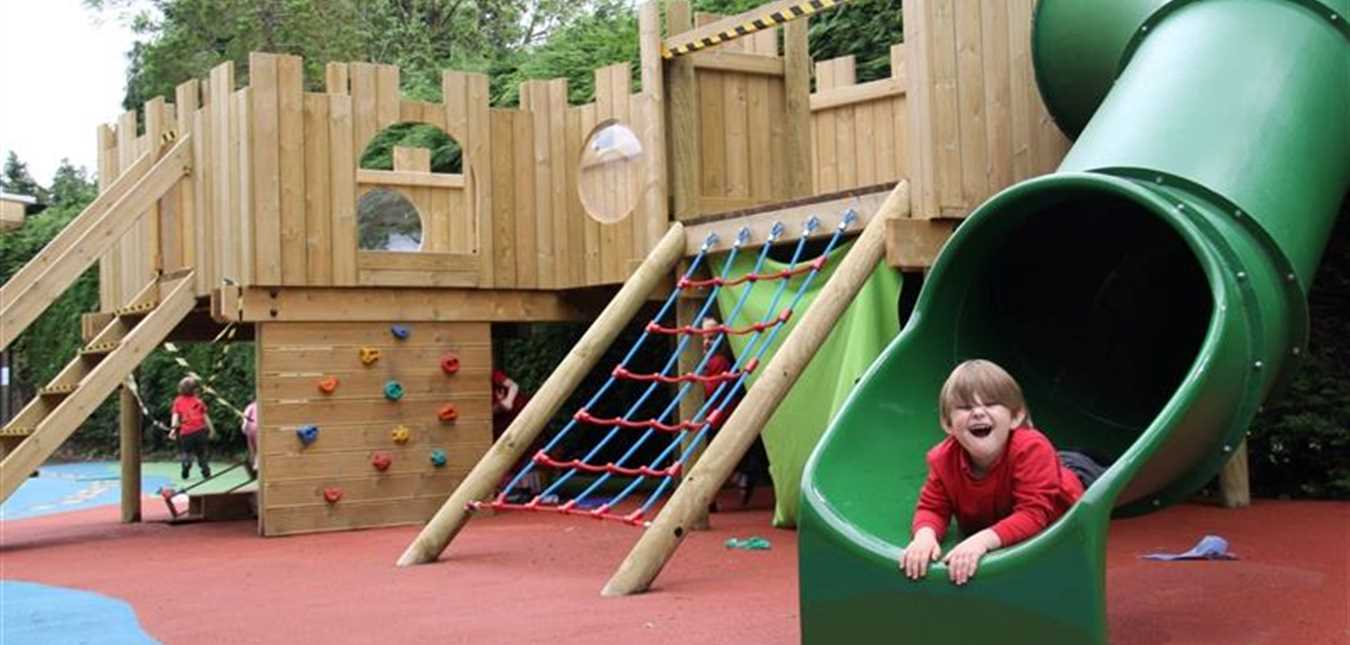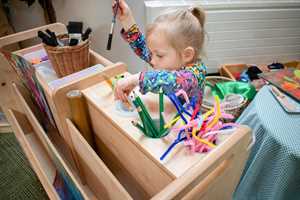Children's Health
Climbing brings many amazing benefits to our children
Our Educational Copywriter, Emma Homan, tells a wonderful story about her son's urge to climb and how this opened her eyes to the many benefits that climbing brings to children...
A few months ago, I found my six-year-old son scaling up to the top of a 7ft vertical column radiator on our kitchen wall. I’m amazed the whole thing didn’t come crashing down in a pile of crumbled plaster and burst pipes.
Of course, we had a few words. “But I can’t help it, I just NEED to climb!” was his reply. And that’s how I came to find myself on the phone to our local climbing centre, with more than a little trepidation, booking him on his first proper climbing session.
We haven’t looked back! The first time I took him, it’s fair to say that I was terrified watching him shimmy 30ft up above my head. But he had a harness, and a rope to keep him safe, and he was fine.
When children start to climb things, so begins a stage that strikes terror in most parents. But learning to climb is a normal part of their development, and it’s really good for them (provided the climbing structure is sound - radiators are not a good idea!).
There is huge developmental potential to be gained from climbing. Back when we were little, a climbing frame was one of the first pieces of playground equipment that we would run to for the adrenaline rush when we reached the top and were King of the Castle!
Sadly nowadays, children have become much more used to a sedentary lifestyle. They love their phones and tablets, and even if they do love their sports and outdoor adventures, parents often keep them on a tight leash because they are afraid for their safety, too quick to shout “Get down from that tree!” than encourage them to go out and challenge themselves.
It’s not their fault, it’s the way society has become and the culture of blame that we find ourselves living in.
It’s time to give our kids back some of their freedom. It has often been argued that we are in danger of moving backwards as a species if we don’t allow and encourage our children to use their bodies in the way they were designed to use them.
Sue Palmer, a former head teacher and author of the book Toxic Childhood says:
Children are biologically equipped for outdoor exercise and exploration. As we increasingly substitute this sort of activity with screen-based, consumer-driven entertainment, there’s a danger we’ll lose touch with many of the skills that have helped human beings survive through the millennia.
The good news is that many schools are getting wise to this notion. Outdoor play and outdoor learning is becoming more of a regular feature on lesson plans across the country.
Schools are designing and installing some fantastic outdoor learning spaces with good quality playground equipment, capitalising on and unleashing the developmental benefits that can be gained from allowing children to do what comes naturally to them, moving their bodies around as they learn and yes, letting them climb!
What is it about climbing?
It’s Physical Fitness and Development
Children need to climb. It is so good for their physical fitness and development.
All that stretching, reaching and swinging, pulling and pushing with their limbs, is what teaches them awareness of their bodies and the space that they are in. It improves spatial awareness, and works children’s muscles so that they grow, strengthen and develop as they should.
Product Spotlight
It’s cardio-vascular fitness too, climbing across or up to the top of a structure takes some doing and requires energy. Balance and coordination is improved as children manoeuvre themselves across different surfaces and step or jump between levels.
The thing about these big muscular movements is that it’s not just about the obvious physical exercise benefits that they produce. Making these big movements, stretching and circling their arms and legs and standing on tiptoes to reach, jumping and landing, these movements, when enjoyed regularly, trigger muscle memory and teach children body control.
We'd like to introduce our brand new Bouldering Climbing Wall for schools.
These are the big steps that Early Years learners need to be able to master smaller movements which require fine control too. Think of the fine motor skills, the control required to fasten buttons on a shirt or to hold and manipulate a pencil.
If they are going to be able to do that successfully and learn how to dress themselves or how to form letters so that they can write well, then by mastering all the big arm movements they are in a much better position to master the smaller and more intricate ones.
This doesn’t just apply to EYFS children. Throughout the Key Stages children face all sorts of different challenges and keeping their bodies active and strong through climbing, and all the different parts of the body it uses, can’t fail to help them.
It’s learning independence, risk taking and survival
Surely some of the most important skills a human being can have. As children become adults, their parents and teachers won’t always be there to stop them from falling.
Children need to learn how and when to, or when not to, take calculated risks for themselves. To be independent and survive. If they don’t learn how to do this when they are young, then they will struggle with all sorts of real-life problems when they are older.
In climbing, children are continuously assessing risk so as not to fall and hurt themselves, or worse. This does not for one second mean that children should be put in genuinely dangerous situations.

By offering children plentiful opportunities to climb in safe and supported environments, they learn how to assess and navigate risk and how to overcome it themselves. Perhaps one of the most valuable things that we can teach them.
Most children have a natural sense of adventure and it’s about capturing this and allowing them to learn from it, rather than crushing it out of them.
It’s sometimes surprising to see just what they can do for themselves given half the chance, and it’s so liberating! Climbing is exciting and invigorating and yes, a little bit scary sometimes, even if you are only 2ft high up a playground climbing wall!
But isn’t that what makes life good, enjoying a sense of adventure? The National Trust recently conducted surveys which revealed some interesting results:
- Fewer than 10% of children play in wild places; down from 50% a generation ago;
- Three times as many children are taken to hospital each year after falling out of bed, then from falling out of trees; and
- 50% of children have been stopped from climbing trees at some point.
But to what end? It’s the feeling of being alive that children get from being outside in the fresh air that’s so important, and so much healthier both mentally and physically than sitting in front of a computer screen, shooting something or interacting with something or someone that doesn’t really exist.
Climbing doesn’t need to be technical. They just need to go out and give it a go.
It’s developing logical thinking and creative imaginations
Watching my son working his way up that climbing wall for the first time, it became clear just how much logical thought went into it. He was having so much fun he was blissfully unaware of just how hard his brain was working, not to mention his little arms and legs.
Every few steps I saw him stop, look around and take stock. Where should he put his hands and feet next to find the best and safest route to ensure he got to the top?
He was using cognitive skills as much as anything else, mentally mapping out his way and learning how to navigate. He was almost euphoric when he reached the top because to him it was a huge achievement both physically and mentally.
Climbing frames, climbing walls, bouldering walls, climbing any which way, all present great mental challenges for children.

They need to plan logically how to get where they want to be. It requires them to think about how best to move their bodies within the framework, and how to solve the puzzle of getting up or across to the destination point.
Not only does climbing stretch their bodies, but it stimulates their minds. Once children get into it, they can really start to use their imaginations too, making climbing frames worth adding to almost any play area.
A climbing wall or a climbing frame might be just that one day, and a giant’s den, a princess’s castle, a spy’s base or a pirate’s cove the next! Where will your children climb to next?
If you are looking to install some climbing apparatus in your school grounds and would like help with ideas, or would like to hear more about what we can offer, please Contact Us. We have a great range of Trim Trails, Treehouses and Climbing Frames providing a whole array of different physical challenges for children to overcome on your school playground.




.jpg)
.jpg)
.jpg)

